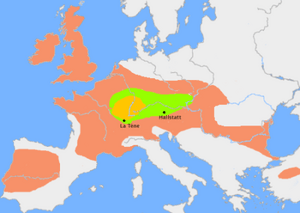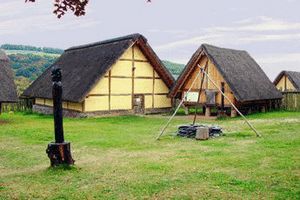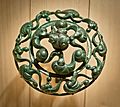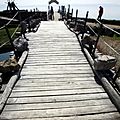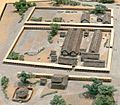La Tène culture facts for kids
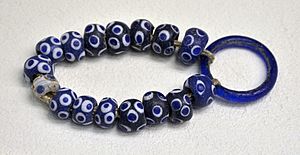
The La Tène culture existed from about 500 BC to about 100 AD. Named after a town in Switzerland near Neuchâtel, it was greatly influenced by the Roman and the Greek cultures. There are two sources for this:
- Things found
- Romans and Greeks came in contact with the culture and called them Celts, usually. They wrote about them, most notably Julius Caesar's "On the Gallic War" (De bello gallico).
The Celts basically lived in clans, which were led by leaders, the druids and the bards. Women were much better off than under the Romans and were of a similar status to men. There were both polygyny (a man could have several women) and polyandry (a woman could have several men).
Images for kids
-
Overview of the Hallstatt and La Tène cultures. The core Hallstatt territory (800 BC) is shown in solid yellow, the area of influence by 500 BC (HaD) in light yellow. The core territory of the La Tène culture (450 BC) is shown in solid green, the area of La Tène influence by 50 BC in light green. The territories of some major Celtic tribes are labelled. Map drawn after Atlas of the Celtic World, by John Haywood (2001: 30–37).
-
Detail of the Battersea Shield, insular late La Tène style
-
Bibracte oppidum, France, outer walls
-
Oppidum illustration
-
Gergovia fortification wall remains, France
-
Vesontio oppidum, France
-
Maiden Castle hillfort, Britain
See also
 In Spanish: Cultura de La Tène para niños
In Spanish: Cultura de La Tène para niños


